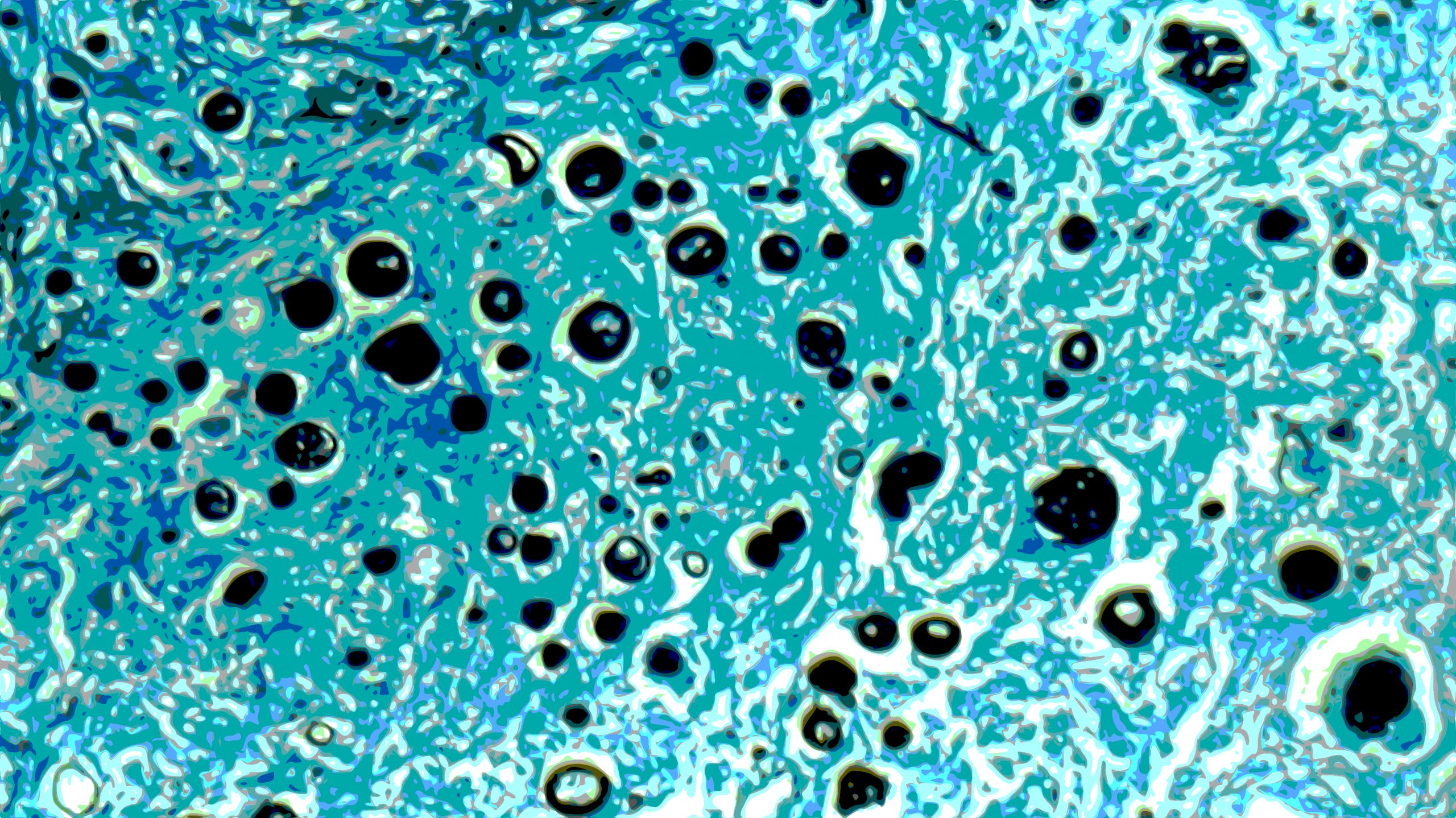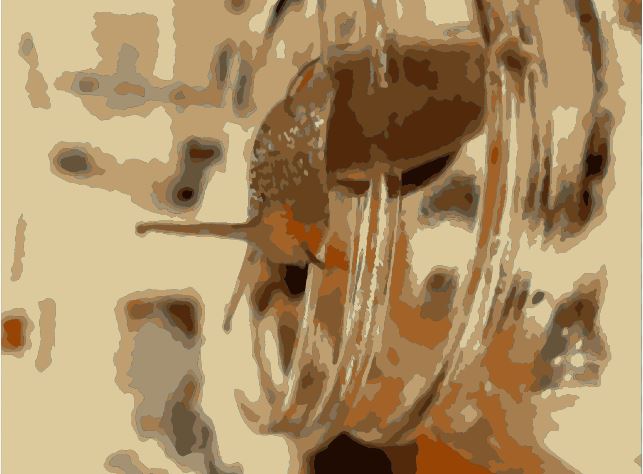The Geographic Dispatch critically examines issues in our global food system in ways that transcend space and place.
The food system is a massive, global organism. It imbibes and excretes; it has a metabolism. Capitalist agriculture sometimes views waste as an opportunity to feed other aspects of the industry—namely by repurposing agricultural waste as sustenance for food animals. The redirection of waste—such as vegetable mash leftover from processing, cobs, husks, fish heads, arsenic generated from copper smelting, and even pharmaceutical waste—into the mouths of the animals we eat simultaneously reinforces wasteful food production and its toxic outputs while seemingly “solving” the problem of agricultural waste. However, in our broken food system, toxicity is simply relocated from soil to animal bodies to human bodies. If wastes can be recommodified as animal feed, they will be fed back into the agricultural cycle, regardless of their toxicity or their polluting origins. Capitalist agriculture justifies its continued existence by finding new locations for its toxic waste: either in waterways or animal bellies.
But can thinking of environmental crises in terms of a complex metabolism change the way activists design alternative food systems and local foodways? Hannah Landecker, Professor of Sociology and Director of the Institute for Society and Genetics at UCLA, spoke with MOLD about her research on the emergence of “metabolism” as a concept, the practical uses of metabolic theory today, and the waste and toxicity of capitalist agriculture.
Britt Young:
Your research traces the ways in which waste production in our modern food system has become a central component to its function. Could you explain how the industrial food system today deals with waste?
Hannah Landecker:
So the short answer is: burned, buried, composted, dumped, washed away, or fed forward into another use. This last one might be anti-intuitive, since we think about industries producing waste rather than industries consuming waste, but this is an important characteristic particularly of how animal production became industrialized in the United States.
In cotton production, you have a lot of leftover cottonseed, which is a waste. Cottonseed has a lot of oils when you press it. So, some of it gets made into Crisco and feeds humans but a lot of it actually gets funneled back into the food production system via animal feed. If you have so much waste that you can’t get rid of it, it really weighs down in your industry. But if you can repurpose it and resell it and feed it forward and make animal bodies turn that into something valuable, then you have built a lot more capacity to have all of your commodities being produced together and not being weighed down by manufacturing byproducts. This process of repurposing waste as feed becomes the manufactured feed industry.
It’s not necessarily a bad thing to reuse waste—in fact it’s a principle of contemporary zero-waste approaches. The problem is that in the past—and in the present—not all of the waste in this system is accounted for, and often necessitated the use of fairly toxic substances to get the animals to grow efficiently on such feed. Just because people were reusing waste doesn’t mean they weren’t also simultaneously creating a lot more of it, and some fairly noxious forms, for example the widespread use of arsenic-based medications as growth promoters in US agriculture for much of the twentieth century.
BY:
In your work, you describe something called the “chemical gaze”? What is this way of viewing the world and why is it important to understanding capitalist agriculture?
HL:
When I was reading the original accounts of how early twentieth century agriculturalists were building a system of flow of nutrients from waste products to animals, for example taking the mash leftover from making beet sugar and turning it into dried cattle feed, they didn’t see a stinking pile of mash (if you’ve ever lived near a sugar beet field, you’ll know what I mean by “stinking”). They saw carbohydrates, they saw nutrients that could be used by another organism. They really looked at matter and didn’t see fish heads or corn cobs, they saw protein, carbohydrate, fat, calories, those kinds of things.
The chemical gaze is not just a thing of the past in which enterprising businessmen made a pretty penny off of someone else’s waste. Today we’re seeing resurgent interest in using bacteria or fungi–perhaps fed on food wastes, perhaps other cheap nutrient sources—as cell factories for making valuable molecules. Where your average consumer might see a range of commodities such as food, leather, or fabric, someone who’s looking at it with a chemical gaze sees a suite of proteins. If you have a chemical gaze, you see the chemistry that makes structure and texture and flavor, and you see the chemistry that makes edibility or biodegradable packaging. So the chemical gaze is not necessarily a bad thing either, it’s a way of perceiving the world as a process of interconnected chemical reactions, some of which can turn matter from cheap to valuable, or sometimes toxic to nontoxic.
You eat bacteria in order for them to inform and be a part of the gut biome, to be in conversation with the cells of the human body.
BY:
A good number of environmental activists believe capitalism never considers the problem of waste, and that the problem lies in its indifference toward the production of waste. But your work shows that perhaps the picture is more complicated. How does capitalism keep finding a use for waste, and is the question of waste a misdiagnosis of the problem?
HL:
Activists are totally correct in saying that waste has been intentionally or unintentionally completely obfuscated or marginalized. And that many industries can only function because they are not held accountable for the so-called “externalities,” such as what wastewater runoff does downstream, to the ecology it ends up in. If they were held accountable for those externalities, they couldn’t possibly turn a profit. The world and our bodies have been treated as if they will absorb endless amounts of dumping. We need to account for these behaviors around waste that is left for others to take care of both in terms of moral responsibility and economic responsibility if we’re going to make a shift in the food system or other sectors of industrial manufacturing. At the same time, it is important to recognize that the reutilization of waste has been very important to the history of the corporate form and is very important to many current systems of production that are still—just like the beet mash speculators of yore—spinning straw into gold so to speak, one way or another.
Unfortunately a lot of the wastes that come from petroleum-based chemistry just aren’t endlessly reusable and indeed come to rest rather than staying in motion, and come to rest in places we really don’t want them to, like people’s bodies or in riverbeds—and continue to be biologically active there. This synthetic chemistry based in oil and coal has really characterized twentieth century production systems. This is why I think most of the hopefulness around zero-waste or circular agriculture really depends on microorganisms such as fungi and bacteria and interconnecting the different biochemical capacities of different creatures—such systems perhaps leave less unusable residues because they depend on metabolic communities; one creature is always consuming another’s emissions. The idea that you can just continuously recycle things based in petroleum chemistry like plastics is so clearly not true (and various people have shown it to be a story that the plastics industry cynically deployed to make their products seem like they were part of a virtuous circle of reuse). It’s time for a different sort of chemical gaze, I guess, one that focuses on residues and harms, not just the question of whether there’s one more economic use of a substance before it is abandoned.
BY:
Your work describes how industrial food capitalism views animals as useful machines or useful metabolisms. Is thinking with metabolism something that activists and designers, striving for new food futures can think with? How can the concept of metabolism be useful to us?
HL:
When people draw on ideas of “metabolic rift” or the “metabolic shift,” they’re often saying, Well, the circuit is broken.The organism that grows in the soil is supposed to return to the soil but capitalism extracts from one place and puts it in another place. So there’s a tendency to think of a kind of capitalist world metabolism, one that generates a ton of shit, that it doesn’t know what to do with. This is a very modernist, dyspeptic view of what’s wrong, namely, that the “inputs and the outputs” are going to be gummed up by the overproduction of waste in the world machine.
Metabolic theory and metabolic sciences are really shifting in all kinds of interesting ways right now. A good example is the microbiome. The microbiome is not an “input-output” question. The microbes that humans ingest are not “fuel” or “building blocks” that feed the body-machine. Some of them come to reside in the body, others while passing through are in a kind of conversation with the microbes already living there. You eat bacteria in order for them to inform and be a part of the gut biome, to be in conversation with the cells of the human body. While they might participate in energy production, they also participate in immune function, gut integrity, and all kinds of things that we still are striving to understand.
In the colon, bacteria live in a thick mucus layer that lines the organ, which keeps them very close to, but not inside, human tissue. There’s a constant interaction in which the bacteria stimulate the cells lining the colon to make mucus, and the cells in turn are able to consume all kinds of byproducts of bacterial metabolism. If that relationship gets compromised—for example the host human doesn’t take in enough fiber to support bacterial metabolism, or the mucus barrier is damaged by emulsifiers—you get “leaky gut” and an intrusion of bacteria into human tissue, which causes inflammation. It’s a lovely example of interaction in which a relationship between bacteria and human cells is necessary to maintaining the barrier between them. To me, these processes are about maintaining extremely intricate, intimate architectures. That mucus on the inside of the human gut is exquisitely perfect for having a population of bacteria that lives really close to you but not in you. I would think designers might be excited about exploring these concepts of spatial and temporal organization that keeps things close while keeping them apart; of the idea that components of food might be much more than food or fuel, but might inform the very interface by which they are processed.
BY:
I am very attracted to your way of conceiving food “as environment”; that when you ingest something, you ingest its ecological contexts. Is there a productive way to employ thinking of food “as environment” for activists or designers who are trying to achieve a more just and sustainable food future?
HL:
I think that these developments around the idea of planetary health have a lot of promise for us in rethinking body environments. We are coming to understand the ways that we produce food are contributing to carbon emissions, pesticide pollution, and reduced biodiversity, so our comprehension of the connection between food and the environment is also fairly robust. But the idea that those agricultural practices and the food that is produced by them are part of the health of the body is one step further, and it’s a little harder to comprehend. If you have a plant that is grown with pesticides, we can think about the food carrying toxins, that’s easy to comprehend. But what’s harder is saying, Okay, we have this plant, and we’ve devastated the soils, so there are no fungi growing symbiotically with it, so actually the nutrient profile of this mono-cropped plant is barren compared to one grown another way; plants are also their environments, full of all these phytonutrients and minerals and all kinds of amazing molecules which actually have important roles in human health and well-being.
Every time you eat something, you are eating the world. This way, we can visualize ingesting the world. Maybe we can also begin to see the reverse: it’s really hard to think about human health impacting the environment, but if we eat the world every time we ingest, then why wouldn’t we excrete a world as well? A population that consumes a lot of antibiotics, cancer drugs, and antidepressants is going to excrete a lot of those things into the water and soil. We’re not used to thinking about public health as an environmental issue, but of course it is about more than sickness and health of individuals.
Most of the hopefulness around zero-waste or circular agriculture really depends on microorganisms such as fungi and bacteria and interconnecting the different biochemical capacities of different creatures.
BY:
You write, “It has never been more important to cultivate knowledge of what has fed and what will feed food.” What can we do with this knowledge?
HL:
Many people already use this kind of knowledge to make choices about how to eat, for example seeking out organic food because they hope that the vegetables and animal products they consume have been fed in sustainable fashion, or they’re trying to avoid ingesting pesticide residues. Calculations of the carbon footprint of various foods also take into account the emissions generated by the inputs that were necessary to grow that food, and these calculations can be used to inform both individual and policy decisions. In a more existential sense, thinking about every foodstuff as something that had to be fed to become what it is—and this includes the labor as well as the matter of feeding—makes you see the relations and processes that constitute any object on the grocery store shelf. It always made me laugh to see “grass-fed cheese” because it evoked a mental image of blocks of cheese out on the pasture, but you can actually end up in some remarkably illuminating terrain when you ask where the feed of different food commodities comes from.
I also think that this point of view has great potential for dislodging the very tenacious question of whether this or that food is “good for you.” But of course it always depends. The question assumes that the food that’s in front of you is a stable, universal entity. “Blueberries are good for you.” But, you know, it really depends where that berry is grown. If it was grown near the Alberta Tar Sands, it will probably have vanadium and uranium on it1. And, of course, that’s not good for you. So, understanding food as always constituted by the things that go into it, also means understanding that you are constituted by what you eat. Your very ability to persist in space and time as an organized entity is dependent on food. Of course you can’t know everything about everything you eat. You can’t know everything about what you eat does to you. But, we could definitely know a lot more and have a much stronger sense of foods as processes instead of things.
- Do Berries Listen? Berries as Indicators, Ancestors, and Agents in Canada’s Oil Sands Region, Baker.
BY:
Considering what you know about the ways capitalism continues to invent new uses for waste and seems to justify its existence through this form of efficiency, what can the degrowth movement do to intervene? In your opinion, what seems possible?
It’s a lovely example of interaction in which a relationship between bacteria and human cells is necessary to maintaining the barrier between them. To me, these processes are about maintaining extremely intricate, intimate architectures.
HL:
I am a constitutionally glass half-full kind of person, and also a historian, so the combination of those two things means that I understand that the way the world works now is not inevitable. It could have been otherwise, and that means that it can be otherwise. So everything is possible.
A lot of the twentieth century nutrition scientists and agriculturalists whose work I’ve studied were super focused on the question of maximizing growth of animals or plants, and often by extension, people. So focused in fact that they didn’t seem to ask any other kinds of questions. We know more about things that make organisms grow than things that make them immunologically robust or longer lived. Therefore we are really mired in this framework in which if something is wrong, the answer is to consume more in an attempt to fix a deficiency. I would be cautious about ascribing all of this to capitalism. There’s a lot that can be achieved by being more specific about assumptions like those around growth and deficiency, and really working to create other ways of thinking and doing by building alternative frameworks, using other chemistries. The only way we will begin to “leave it in the ground” as people say about oil, is to start making stuff differently. Of course, it might be helpful to also make less stuff that lasts longer, but I do think that alternative methods and substances will be important as well. Isn’t that why people are so excited about fungi these days?


